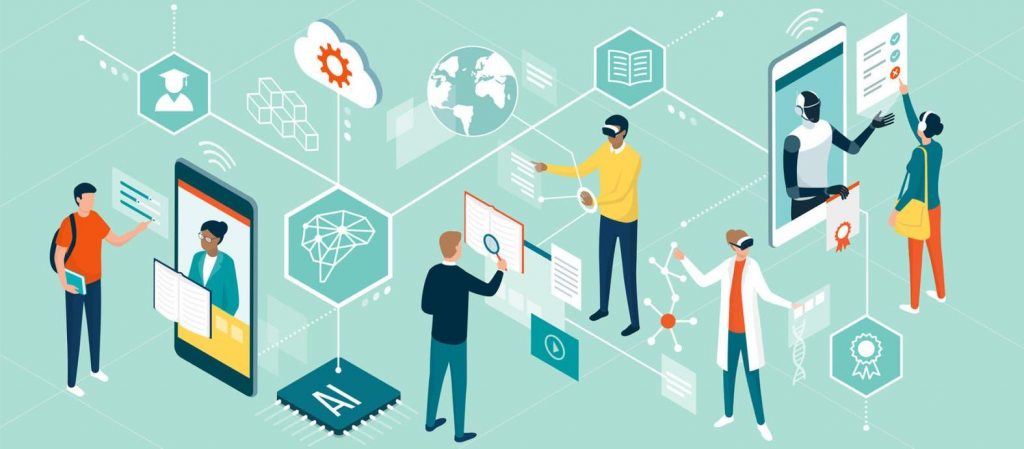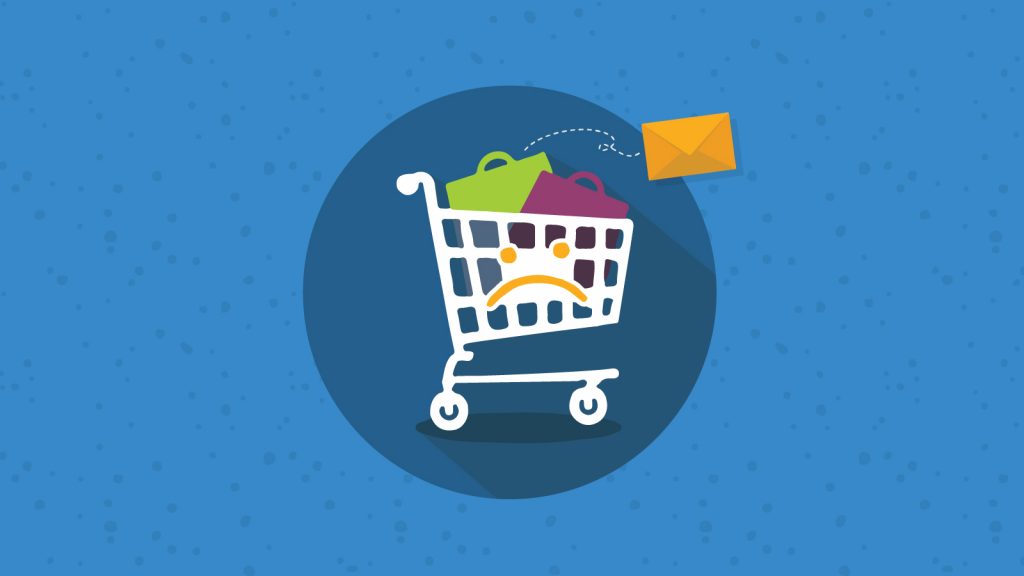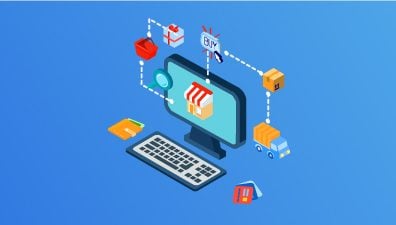If you’re a successful eCommerce brand, you probably know that nothing does better than eCommerce personalization in helping customers feel special and then loyal to your brand.
As online consumers become more and more demanding in choosing the best products, this makes this market more competitive than ever. Everywhere, we can see online stores selling similar quality products, and prices are also not much different. So how will customers decide?
The answer, at this point, will depend on their personal experience at each website they visit.
What we learn here is, that whoever creates the better eCommerce personalization wins. This condition is not limited to anyone, whether it is a luxury brand or a low-capital start-up.
You might be thinking:
- When I’m struggling to make ends meet every day to generate revenue, why should I take the time to take care of each one among your few customers like what big brands do with so many supporters?
- I should focus more on key activities like sales or PR, etc.
If you have that mindset, then we have to give you some sad news that your start-up will never be as big as the businesses you are comparing.
For more reasons why personalization is important in eCommerce and more eCommerce personalization ideas for your online store, scroll down to the smaller sections.
Table of Contents
- What is eCommerce personalization?
- Benefits of eCommerce personalization engine
- Designing personalized experiences in eCommerce
- The key differences between B2C and B2B eCommerce personalization
- eCommerce personalization strategies for every business
- Factors to consider when choosing a personalized eCommerce platform
- eCommerce personalization trends of 2024
What is eCommerce personalization?
You visit an eCommerce clothing store to make purchases and sign up for an account via your email account. After a while, you receive an email from that store with a 50% off coupon for an over-$100 bill on your birthday. More specifically, the products it introduces also match your style.
The act of giving away coupons on your birthday via email is a form of eCommerce personalization. This brand used the information you provided when you registered an account on the website to plan its implementation. Not only that, but it also knows your style of dress. That’s because it’s reviewed and analyzed based on your purchase history in previous purchases and suggested to you.
The actions, such as collecting user information or researching shopping habits, preferences, financial situations, etc., are a way for eCommerce businesses to create a unique shopping experience for each of their customers on the website. Depending on the type of customer, they will have a unique approach to creating a proper shopping experience. These actions can be displaying different content, sending email marketing, recommending products customers might like, offering specific offers, etc.
Benefits of eCommerce personalization engine
Boost revenue
Sales are the biggest goal of businesses when implementing eCommerce personalization. There are many eCommerce personalization stats to prove it. Which, if your customers are satisfied and happy with the personalized experience you create, the average growth rate for your revenue can be up to 20%.
Furthermore, it also lays the foundation for a breakthrough in long-term revenue, as eCommerce personalization is the fastest and most sustainable way to increase customer retention. Make your customers feel like your businesses are only serving them, then not only will they return for repeated purchases, but they will not hesitate to recommend your products/services to their relatives.
Strengthen customer loyalty
In a competitive environment, if we exclude the quality of products and services, consumers will tend to choose brands that give them a better experience. That’s because they feel taken care of with their interests, habits, and other special requirements. From there, they will also get more secure when buying from these online stores.
Increase the value of each order
If you don’t trust a business, would you dare spend more money on items you’ve never used? Absolutely no, right?
Often, businesses that provide a good personalized experience, will take advantage of it to exploit customers more so that they increase the value of each order. The offer of products that customers may like, as we discussed above, is an example of it.
Encourage shoppers to introduce products
This is also one of eCommerce personalization’s benefits in the long run. From one satisfied customer, you will have at least one new lead and so on exponentially. After a while, your reputation will be widely known with just word-of-mouth and a personalized marketing strategy.
Reduce cart abandonment rate
This is not a single company’s problem. The average cart abandonment rate is noted to be very large, and it is caused by the customer’s bad experience when he goes through the checkout process for his order.
At this point, you will need eCommerce personalization strategies to get to the root cause and encourage your customer to return to complete the transaction.
Get forgiveness easier when making a mistake
People say: “Customer is King.”
And it has never been truer in the eCommerce market. Just one small mistake, and you can lose a number of potential customers. However, when customers are sympathetic and acknowledge the effort you put in to please them, they will be more sympathetic to your mistake and forgive it.
Designing personalized experiences in eCommerce
Whatever you do, be careful and remember that what you do must be customer-oriented. Every customer has different online experience expectations. Meanwhile, their own desire for that experience can also be distinct when they are in diverse circumstances. Hence, researching and planning to build eCommerce personalization is not always easy.
So what do you need to do?
Repeat customer research with the following 3 questions:
- When should eCommerce personalization be done?
In the process of users interacting with you, their experience should be personalized at the right time because it will become the catalyst for their decisions at that moment.
- What kind of information do you need to use to create eCommerce personalization?
Once a salient touchpoint is identified, selecting the right elements should be personalized to each customer there. Take advantage of an additional eCommerce personalization engine that provides you with a lot of information, such as marketing automation, CRM, A/B testing, transactional systems, etc.
- How to combine the power of technology and humans?
On a large scale, just human effort will not be enough to collect, analyze data, or plan eCommerce personalization. At this point, advanced technology and software will take care of these things automatically. Your job is just to navigate them and choose the best strategies for your situation.
The key differences between B2C and B2B eCommerce personalization
Operating as a business, you certainly still want your online experience to be as personalized as in B2C eCommerce. As you know, creating a personalized customer experience is not easy, and in the B2B eCommerce personalization case, it is even harder.
The following are the elements that make B2B eCommerce personalization different from it in B2C:
Multi-layered persona and diverse customer base
B2B means that your audience is not just a specific individual who will make decisions. It is, therefore, far more complicated to be successful in convincing your customers to agree with the products, services, and experiences you offer.
An aim of a long-term cooperative relationship
While the most important purpose of B2C eCommerce personalization is to generate more revenue, when it comes to B2B, it is more focused on enhancing the long-term and win-win partnership between two businesses in order to operate more efficiently and reduce costs in production.
Information on target customers
When you are a B2B online retailer, you can know all the information about your customers easily because they can be published on business information pages. Therefore, it is easier to collect information about these objects rather than encouraging customers to register for an account like the B2C model.
eCommerce personalization strategies for every business
Understand audience
This is the essence of the process of creating a personalized experience. It will determine the performance of the program that you will later launch. However, to be able to meet the needs of understanding the entire customers’ buying process from A to Z, as we mentioned, you will need the right combination of technology.
Optimize searching
Searching for customer information indiscriminately will make you drown in a huge pool of information without knowing what to do with it. Instead, focus on keywords that users are interested in to suggest items related to the product they are looking for. In this way, it will increase the likelihood of targeting consumer psychology.
Target & profile
With the help of technology, you can find out the exact list of potential customers by tracking traffic, registrations, ad views, etc. From there, you should track and find clues about your customers’ preferences, shopping habits, search history, and answer their questions to reach them deeper.
1:1 personalize
To complete the eCommerce personalization process, you need to have enough information. This may include basic demographic details (such as age, gender, and location), behavioral data (like browsing and purchase history, cart additions, and engagement with marketing content), device usage, personal preferences, social media interactions, feedback on products, search queries within the site, customer service interactions, psychographic information, and external market trends. Collecting data like these allows for a tailored shopping experience that can significantly enhance customer satisfaction and loyalty.
In addition, aggregate and analyze data rapidly, deploy cross-channel, and optimize machine learning so that your customers will feel that your brand is the ultimate destination that gives them exactly what they need and where they can trust in the long run.
Factors to consider when choosing a personalized eCommerce platform
Nowadays, you can make eCommerce personalization more convenient with the support of eCommerce platforms, as long as they offer the following features:
- Ability to act upon anonymous users: It is especially helpful to be able to support and provide a welcoming experience for first-time visitors to your website.
- Omni-channel support: Customers today can access online shopping on many different channels, and they will be happy if the stores support display and serve them wherever they go.
- Holistic data-driven approach: A tool that allows you to access comprehensive data about your customers will help the technology you use not to miss the necessary information.
- Layout personalization: When customers visit your website, a personalized layout will push them deeper into the following pages or categories.
- Optimization agility: This process should be completed as quickly as possible so that you can build a solid customer base for your store soon.
- Micro-targeting: The more granular your eCommerce platform targets, the easier it is to shape the specific experiences customers want when making a purchase.
- Flexibility at scale: Every business aims for scalability, right? It will be frustrating if your business is going well, but the eCommerce platform doesn’t offer extended functionality.
eCommerce personalization trends of 2024
If you want to pioneer eCommerce personalization, then don’t overlook some predictions about the trends that will be popular in the coming year. Here are four eCommerce personalization trends that are most likely to materialize by their feasibility and signs. Let’s find out together.
Image recognition
Product images can say a lot about the product, such as color, functions, and more. Image recognition capabilities will become more and more popular as a way to create a newer and more convenient experience for users, helping to accelerate their shopping process on the website.
AI optimization
Transparency is a major problem for businesses today when they use technology, specifically artificial intelligence (AI), to collect customer data.
With AI optimization, this technology will give customers more peace of mind when it comes to explaining the source of the information it collects to recommend products to them.
Roles of Psychographic Profiling
The methods of eCommerce personalization are becoming more and more complex and will gradually rely heavily on psychographics. From shopping habits as well as basic information about customers, it can be inferred what their personality, preferences, and conditions are.
Longer shopping journeys targeting
Personalization will focus more on longer shopping cycles instead of the current short-term period, which is usually 30 days. However, according to our assessment, it will be more suitable when applied to areas like luxury goods or cars. But who knows, try it out for yourself if you feel potential.
What we’ve learned
eCommerce personalization today has become almost standard for all activities of businesses. It should be done from the moment you start building the first brick of your eCommerce career. However, if you’ve never tried to do it before, it’s never too late to start. If you need our help implementing it in your brand context, feel free to reach out to us. We are happy to provide eCommerce personalization tips, tricks, and more. If you want more help in eCommerce, don’t hesitate to leave us a message.

















